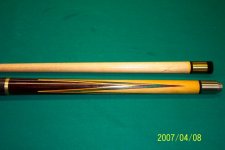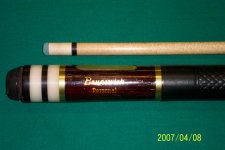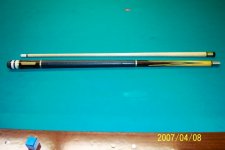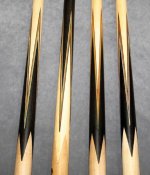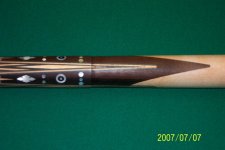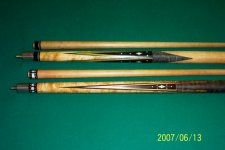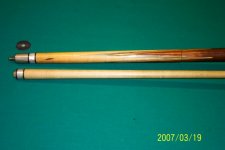The titlist consisted of a hardwood handle and a maple forearm spliced together. That is the definition of a full splice. No A joint. Just wood and glue. This is the exact same way that hercek, tascarella, davis, prather, mark bear, blackcreek, tucker, arnot, whisler, cuemaster, predator, and im sure a few others make their full splice cues. Of course nobody is using the old outdated equipment used by brunswick. I'm sure everybodys equipment and glues are a little different but they are all making FULL SPLICED cues in the same tradition as the titlist.
Claiming these cuemakers do not make FULL SPLICED cues is insulting to their work. I'm sure they have all ripped apart a few titlist cues and know exactly how they are constructed and if anything improved upon the original design.
Here is an excerpt from Mark Bear's website (
www.bearcues.com):
"Over the years Mark has constantly improved upon his designs and construction techniques with the latest being what he calls the "Modern Day Full Splice". This is based on the tried and true Brunswick TITLIST design."
From the interview portion of Hercek's website (
www.hercek.com):
"..in 1991 Burton Spain started working on a full spliced blank, the kind used in the TITLIST. With a full spliced blank, the handle and prongs are made from the same piece of wood and finger spliced into the maple nose section of the cue."
